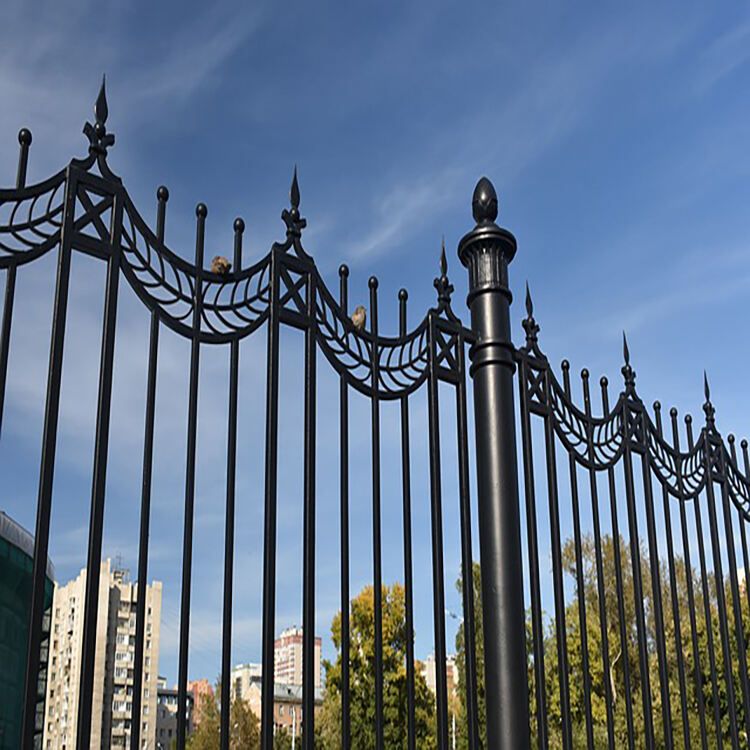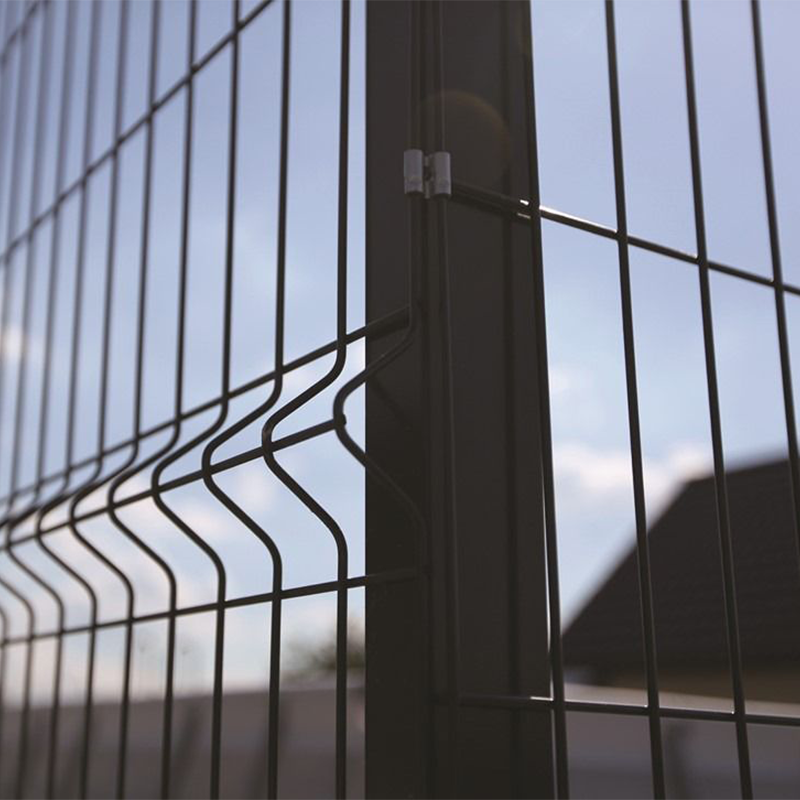Primary Functions of Traffic Control Barriers
Regulating Vehicle Movement in Urban Areas
In cities where space is at a premium, traffic control barriers do more than just separate lanes they actually keep things running smoothly. When properly installed, these barriers help prevent accidents by guiding cars through specific paths. The National Highway Traffic Safety Administration has found that smart placement of such barriers makes roads safer overall. Good barrier placement does wonders for traffic flow too, cutting down on gridlock and saving commuters precious minutes each day. Beyond their functional benefits, these barriers act as constant reminders to drivers about where they should be on the road, helping maintain some semblance of order amidst all the chaos of city driving.
Protecting Pedestrian Zones and Infrastructure
Traffic control barriers play a really important role in keeping pedestrian areas safe from cars and trucks. When we separate people walking from vehicle traffic, accident numbers drop quite a bit according to reports from various road safety groups across the country. Cities that have installed these barriers tend to see far fewer collisions than those without any protection at all. Another benefit worth mentioning is how they shield important city fixtures like street lights, traffic signs, and benches from getting damaged when drivers lose control. People feel much safer walking around when there's some kind of barrier between them and speeding vehicles. This increased sense of security makes folks more likely to walk instead of drive short distances, which ultimately helps make our cities friendlier places for pedestrians overall.
Mitigating Security Risks in Public Spaces
Traffic barriers play a key role in reducing security threats across public areas by stopping vehicles from getting where they shouldn't. Security agencies have noticed that when these barriers are placed around large gatherings or open spaces, there tends to be fewer incidents involving cars. They act as a deterrent against dangerous actions like hit-and-run attacks, keeping people safe at events. The introduction of newer tech like smart barriers takes security even further, allowing for live monitoring and better control over who gets through. Crowd safety remains top priority, while emergency teams can respond much faster when needed, ultimately making our public spaces safer for everyone involved.
Core Benefits for Property Protection
Preventing Unauthorized Vehicle Access
Traffic control barriers work pretty well at stopping people from driving into places they shouldn't. They help keep private property safe and protect areas where only certain folks should go. Most thieves think twice before trying anything when they see these kinds of defenses in place. The police department has noted time and again that places with these barriers tend to get broken into less often than those without any protection at all. For businesses storing important documents or expensive equipment, having these barriers makes all the difference. A local warehouse manager told me last week how installing traffic barriers cut their break-in attempts down by about half since last year.
Reducing Vandalism and Structural Damage
Putting up traffic control barriers tends to cut down on vandalism quite a bit, which helps keep buildings looking good and maintains their structural soundness in public spaces. Cities across the country have seen this happen time and again. Take Chicago for instance where after installing barriers around parks and plazas, graffiti incidents dropped by nearly 40% within six months. When neighborhoods look better maintained, people generally feel prouder living there, which often leads to more investments in things like sidewalks and streetlights. The numbers back this up too many municipalities report steady declines in vandalism complaints once these barriers are in place, showing they work pretty well for keeping things orderly and making streets safer overall.
Enhancing Perimeter Security with Durable Materials
When building barriers, going with strong materials such as metal fence panels or aluminum offers lasting protection from harsh weather and accidental damage. Property owners who spend money on quality barrier systems find their investments pay off over time since they don't have to fix things so often. Studies show homes protected by good quality barriers tend to hold up better against nature's elements than places with cheaper alternatives. Real estate managers especially appreciate this because it means fewer calls about broken fences and less money spent on repairs during bad weather seasons. The initial cost might seem steep, but most find it worth it when looking at what they save year after year.
Key Applications in Modern Infrastructure
Event Security for Mass Gatherings
Traffic control barriers play a big role in keeping people safe at major events while controlling how crowds move around and stopping folks who shouldn't be there from getting past certain areas. Security research shows that when organizers put up barriers in smart locations, they can actually prevent dangerous situations where too many people get packed together and stop cars from闯入 restricted zones. When event planners incorporate these barriers properly into their overall setup, attendees generally have a better time moving through spaces, which means more good reviews and people coming back next year for the same event. Plus, having thought out barrier placement helps during emergencies like sudden evacuations, something that matters a lot when thousands of people are gathered in one spot.
Construction Zone Safety Protocols
Construction site barriers play a vital role in separating work areas from everything else around them while keeping people safe. These physical markers stop random folks and vehicles from wandering into dangerous spots where heavy machinery operates. According to OSHA reports, job sites that properly install warning barriers see accident rates drop by around 40%. That means fewer injuries for crews working there and less risk for pedestrians passing by. Beyond just safety concerns, proper barrier installation also keeps companies out of legal trouble since most local ordinances require them. When contractors follow these rules, workers generally feel better about their environment too, which tends to improve overall productivity on the job site.
Parking Facility Access Management
Traffic control barriers in parking garages really make a difference when it comes to managing who gets in and out. They act as important security features too, stopping people from stealing cars or causing accidents through uncontrolled entry points. Places that have installed these barriers report fewer problems with illegal parking and other incidents compared to those without them. When smart tech gets added to these barriers, they let registered vehicles pass through quickly, which means less frustration for everyone using the facility. Most drivers appreciate not having to wait forever at the entrance gates.
Mechanisms & Technology Integration
Energy-Absorbing Crash Barrier Systems
Energy absorbing barriers play a vital role in reducing the damage from car crashes, making roads safer for everyone who uses them. Crash barriers work by taking some of the force away when vehicles hit them, which means fewer serious injuries after accidents happen. Studies back this up pretty well, indicating that newer safety tech built into these barriers makes them much better at protecting people in places where crashes tend to occur most often. As material science progresses and engineers keep improving designs, we're seeing crash barriers become even more effective over time. Many cities now incorporate these upgraded systems as part of their regular infrastructure updates because they simply work better than older models did.
Retractable Bollards for Flexible Access
Cities around the world are turning to retractable bollards because they offer both security and flexibility when controlling access points. The best part? These systems can be deployed or retracted quickly, which means urban areas can respond to traffic changes or special events without much hassle. We've seen this work well in places where pedestrian zones need to switch back to vehicle access during rush hours. Tech improvements are also making these barriers easier to operate, something that urban planners appreciate since managing city traffic is already complicated enough. Security teams love them too because they get better control over restricted areas without having permanent obstacles blocking legitimate movement through public spaces.
Smart Barrier Systems with License Recognition
Smart barriers with license plate recognition tech really boost security since they only let registered cars through. Most systems connect to central databases so residents and staff can get in easily without carrying around keys or fobs. Property managers who installed these systems first saw better control over who comes and goes, plus fewer security issues overall. The real advantage though is the live monitoring feature that sends instant notifications when someone tries to sneak in with an unrecognized plate. This gives property owners peace of mind knowing their premises stay protected even when nobody's watching.
Material Innovations in Barrier Design
Aluminum Fence Solutions for Corrosion Resistance
More people are choosing aluminum fence panels these days because they just don't rust away like other materials do, making them work well no matter what kind of weather beats down on them. When we look at how long different fencing lasts compared to old school options, aluminum comes out on top most of the time. These fences need way less upkeep too, so homeowners end up spending less money fixing things over the years. The fact that aluminum isn't heavy means installing one doesn't take forever either something that matters a lot when someone needs to get a fence up fast before a big event or anything. Plus, manufacturers keep coming up with new looks for aluminum fencing now days. There's everything from simple modern styles to ornate designs that really stand out. Property owners who want good protection without sacrificing curb appeal find plenty of choices in today's market.
Temporary Fence Configurations for Adaptive Use
Temporary fences really matter when it comes to controlling areas at events, construction sites, or emergency scenes. They offer flexible solutions that can be adapted to fit all sorts of different requirements. The way these fences are designed makes them easy to rearrange quickly whenever conditions change on site. Studies looking at how temporary fencing holds up show they're pretty much as strong as permanent ones but without breaking the bank. When there's a big crowd gathering or some sort of mess happening somewhere, putting up temporary barriers makes things safer and keeps everything organized. That's why so many project managers rely on them nowadays for all kinds of jobs where space control matters.
Steel-Reinforced Panels for High-Impact Scenarios
Steel reinforced panels get made for those really tough situations where something needs to stand up against serious impact without breaking apart. The engineering behind these things shows just how much force they can take before failing, which makes them great choices when we need protection around important infrastructure stuff. Safety experts keep pushing for more steel in barrier designs because it works so well in practice. What makes these panels even better is their ability to scale up or down depending on what's needed. Some installations might require massive structures while others work fine with smaller setups, and manufacturers have figured out ways to customize everything from size to configuration based on exactly what each location requires.
Safety Considerations and Best Practices
ASTM Compliance Standards
Following ASTM standards matters a lot when it comes to making sure traffic control barriers hit those safety marks everyone cares about. The actual ASTM specs give manufacturers something tangible to work with as they design barriers that can withstand real world conditions while still doing their job properly. Companies that regularly check if they're meeting these requirements tend to avoid getting sued later on down the road, plus they stay ahead of what's considered good practice in the field. Some research out there shows that companies sticking close to ASTM guidelines see fewer problems with barriers failing unexpectedly during accidents. Because of this, many manufacturers are tweaking their production methods lately to align better with these standards. This isn't just about paperwork either it translates into actual improvements in how well the barriers perform under stress, which makes drivers and workers feel safer around construction zones and other high risk areas.
Strategic Placement for Maximum Effectiveness
Where we put barriers makes all the difference when it comes to how well they actually work as protection. Before setting them up anywhere, someone needs to look at the whole area carefully. This means checking out traffic flows, weather patterns, even things like nearby construction sites that might affect movement. Cities often rely on old urban planning documents for guidance in tricky spots where cars and pedestrians mix. People who install these barriers need proper training too, especially around busy holidays or during sudden emergencies when quick decisions matter most. Nobody wants barriers sitting there doing nothing because nobody knows where they should go. We also have to keep coming back later to tweak positions as neighborhoods change and new problems pop up. The goal isn't just to set something down once and forget about it.
Maintenance Protocols for Long-Term Reliability
Keeping barriers in good shape requires regular checks and proper maintenance routines. When companies stick to a set schedule for inspecting and maintaining their barriers, they tend to last much longer before needing expensive fixes or replacements. Good maintenance means catching small problems early on before they turn into bigger safety issues down the road. Maintenance records also come in handy when dealing with regulatory requirements and managing risks from accidents. Organizations that follow through with these basic steps protect their money spent on installation while making sure barriers stay up to code and function properly year after year without surprises.



